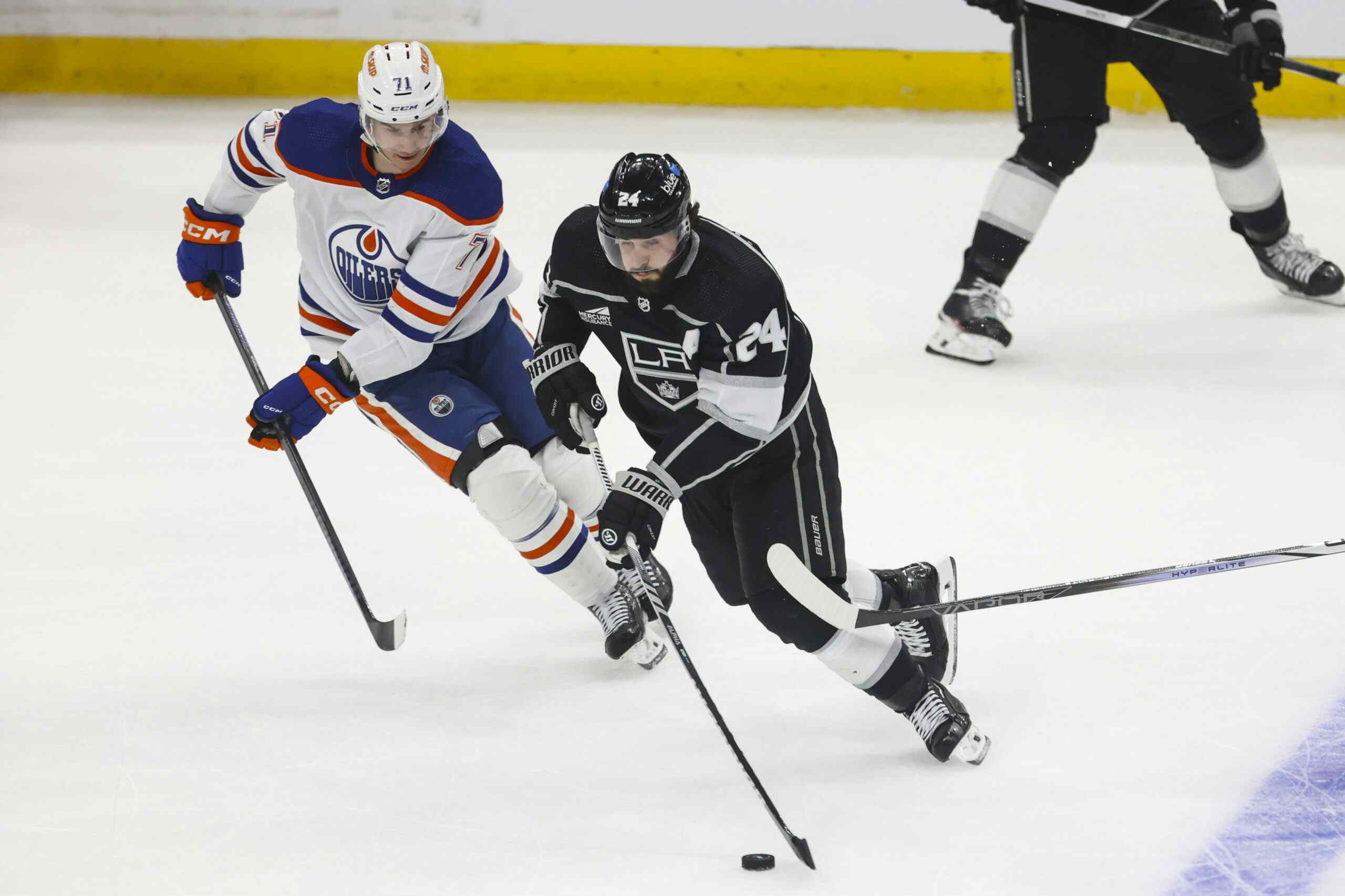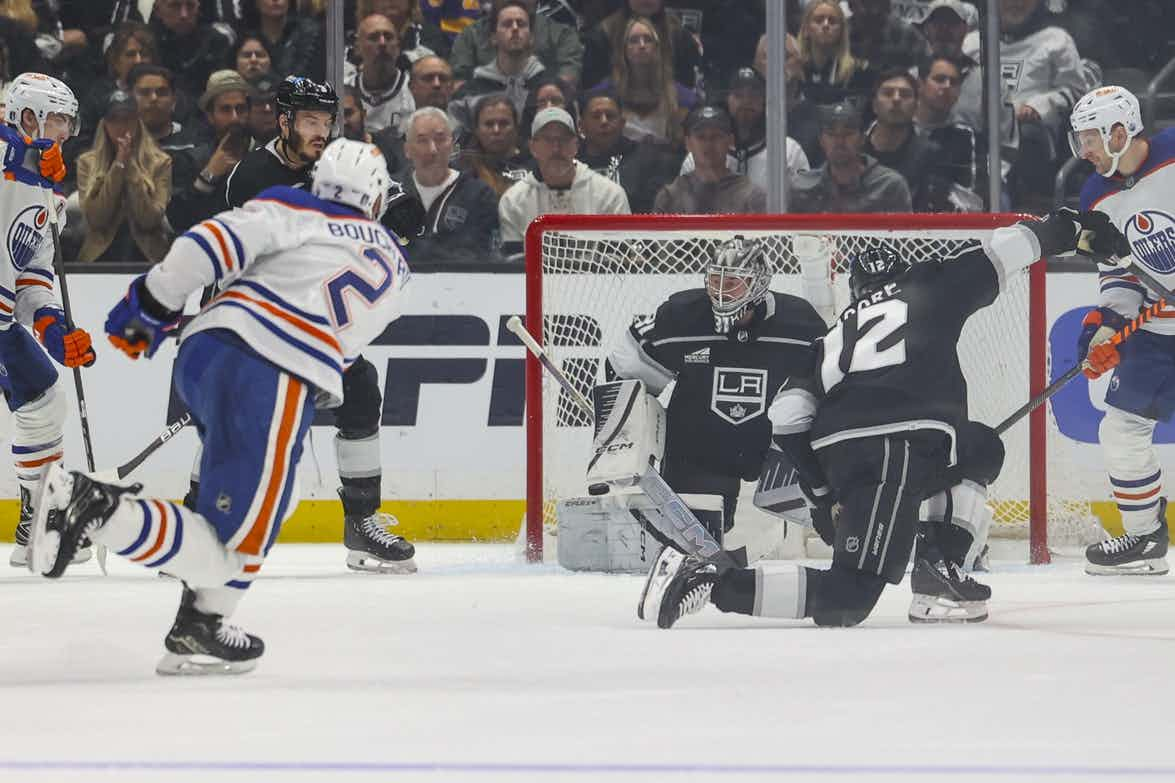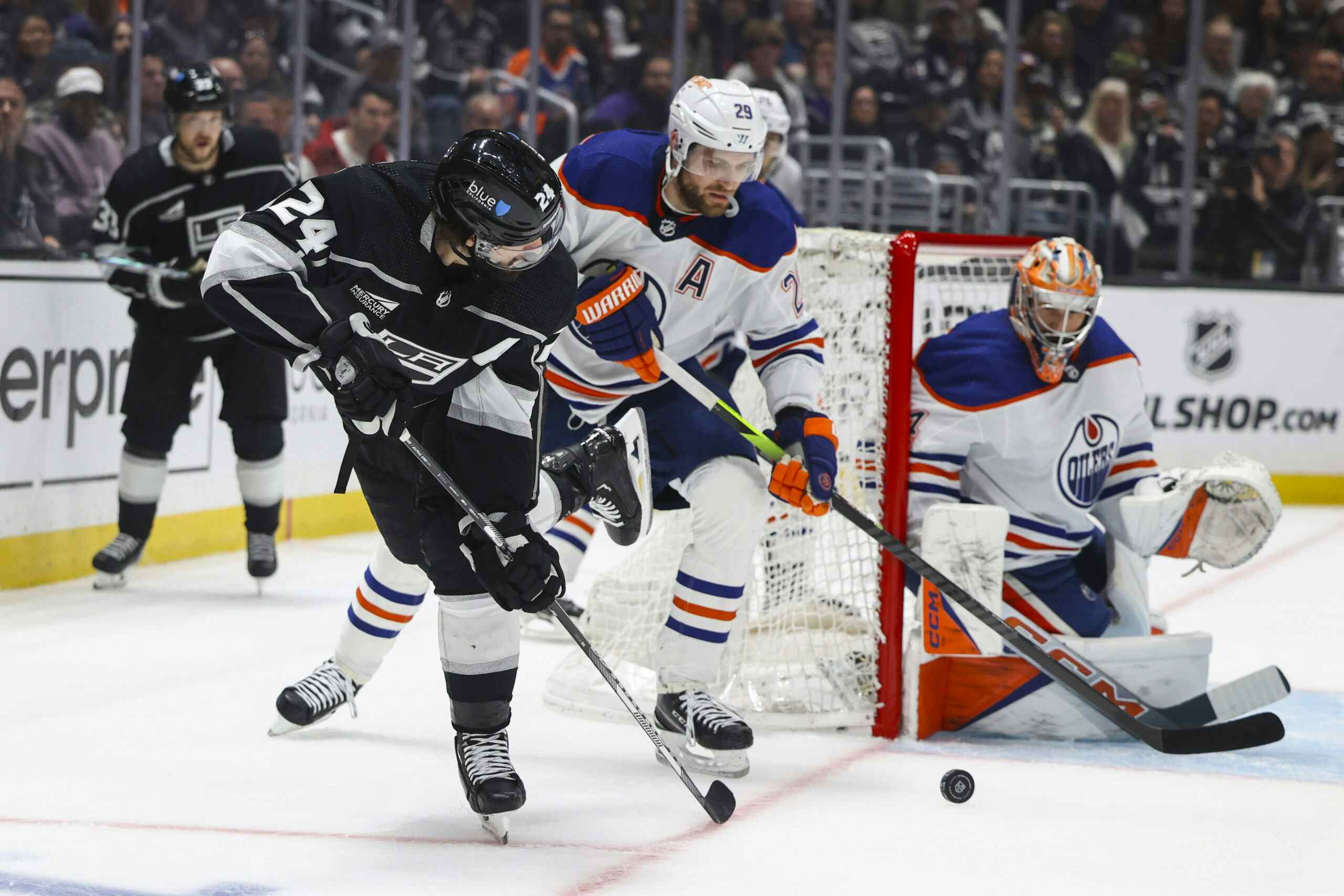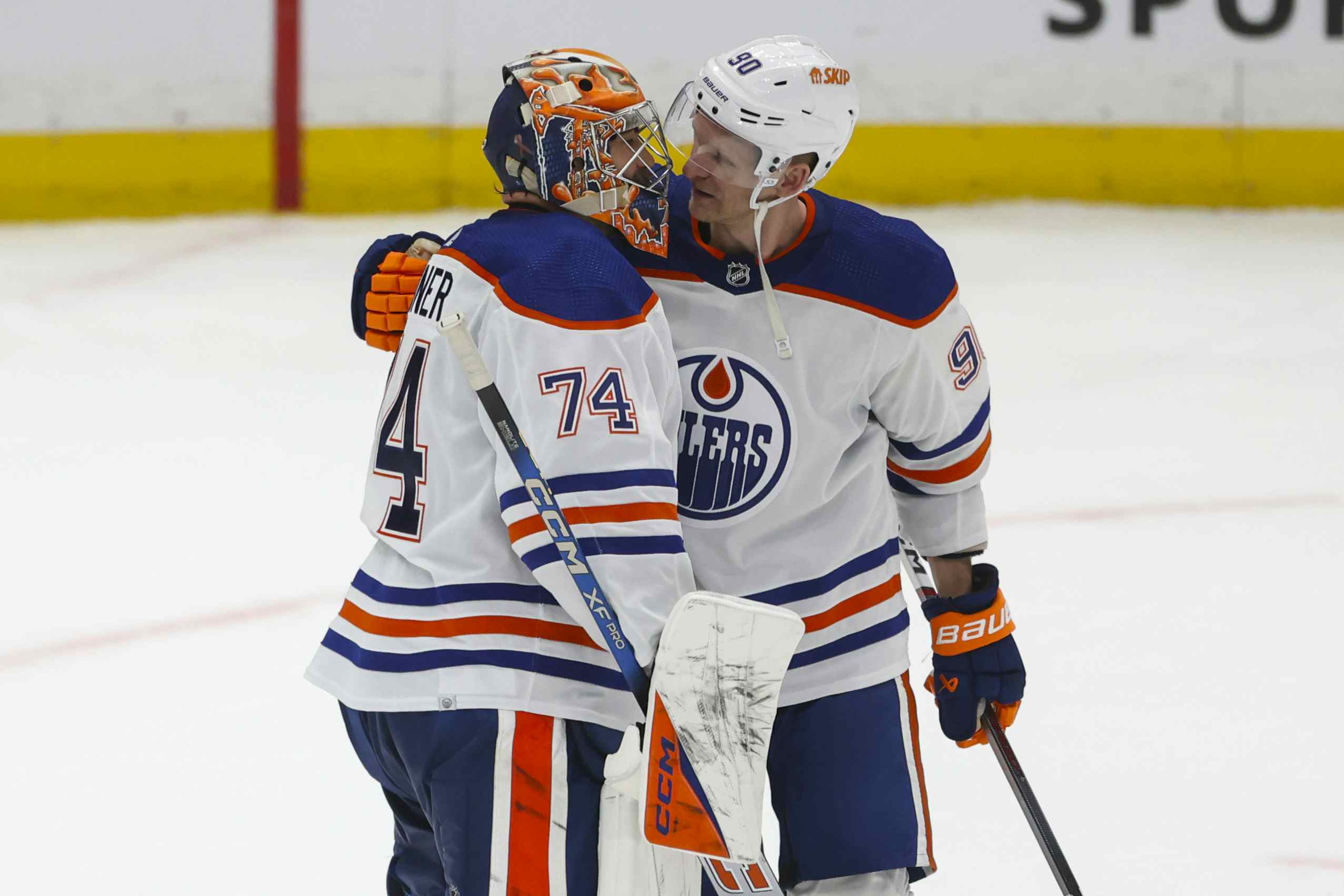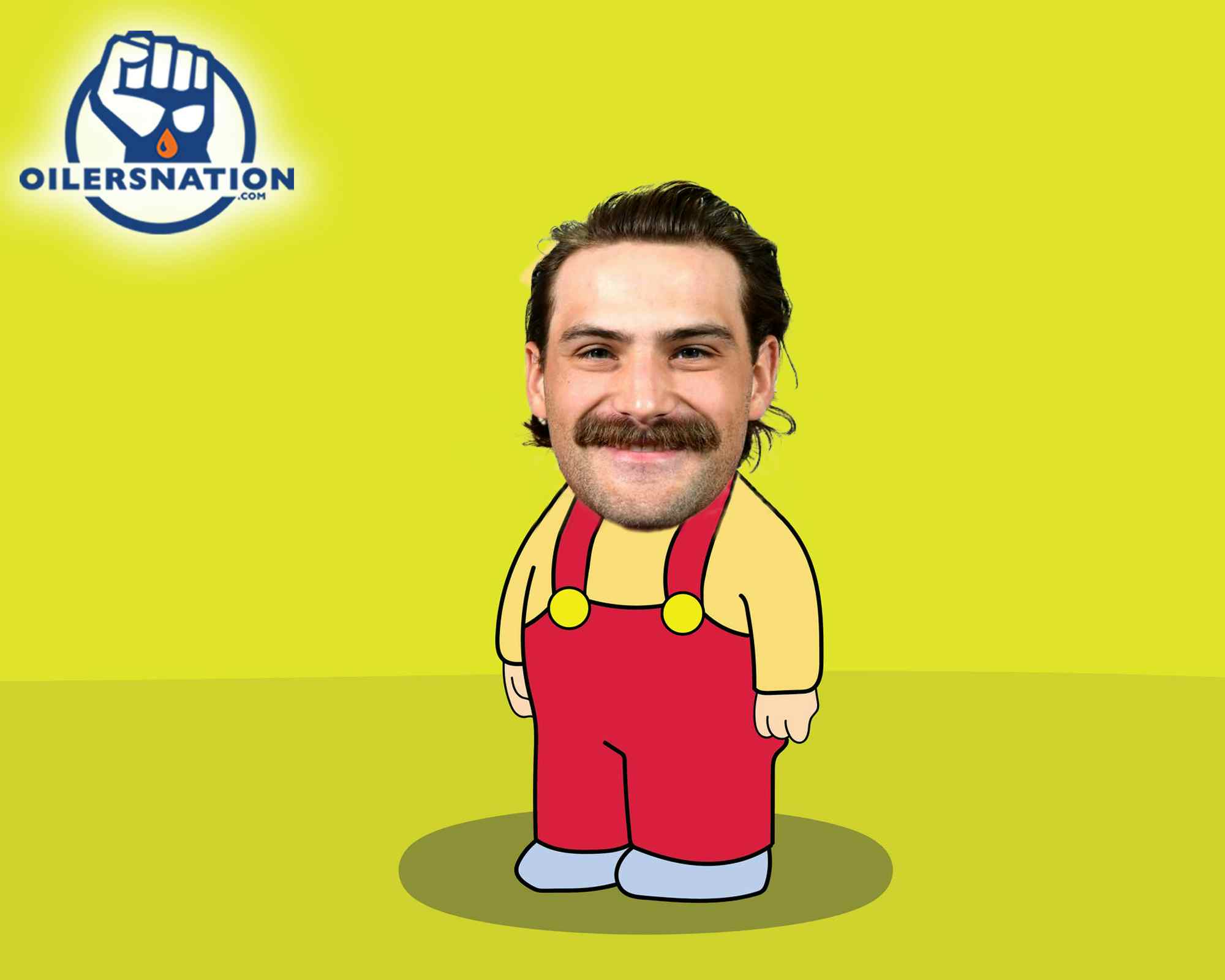How does Benoit Pouliot compare to his peers around the NHL?

“Benoit Pouliot is not a top-six forward” is a phrase which has some currency in its various forms in Edmonton right now. It’s wrong, but it persists because the average person doesn’t walk around with a 180-name list of top-six NHL forwards (six forwards multiplied by 30 teams).
Let’s take a look at where Pouliot would rank on such a list.
Just the Basics

Even those people with a deep skepticism towards enhanced statistics generally recognize that points are a pretty valid indicator of offensive ability. So I used hockey-reference.com’s awesome search function and made a list of NHL forwards by points since 2012-13:
- Points: 112
- Rank: 140th (inside our 180-name list of first- and second-line players)
- Notable players with similar totals: Evander Kane (114), Sean Couturier (113), Mikael Granlund (113), Ales Hemsky (111), Chris Stewart (111), Martin Hanzal (109), Justin Abdelkader (109), Chris Kreider (109)
Abdelkader is perhaps the most interesting name on that list to me, because he just signed a seven-year deal at $4.25 million/season in Detroit which kicks in next year.
Okay, but Pouliot has been a veteran player that whole time. What about people who only broke into the league since 2012-13, who have passed him? Let’s try looking at points-per-game (min. 100 games played):
- Points-per-game: 0.52 (43 points per 82 games played)
- Rank: 147th (inside our 180-name list of first- and second-line players)
- Notable players with similar totals: David Perron (0.57), Brayden Schenn (0.55), Joel Ward (0.54), Troy Brouwer (0.53), Artem Anisimov (0.51), Nick Bjugstad (0.51), Reilly Smith (0.51), Drew Stafford (0.50)
Pouliot scores like a second-line player. By either points or points-per-game, he’s comfortably a second-line forward. As he ranks between No. 120 and No. 150, by league standards that makes him a No. 5 forward; he’s basically the definition of the average second-liner. Additionally, if we look at only players listed by Hockey-Reference as left wings, he ranks 48th by points-per-game, making him about average for a second line left-winger.
But there’s an additional wrinkle. For a good chunk of the time period we’re considering, Pouliot played fewer minutes than the average second-line forward. Someone like David Perron had nearly 4,500 minutes to put up his 0.57 points/game, whereas Pouliot had to settle for just over two-thirds as much ice-time. Because his ice-time was lower, points and points-per-game actually dramatically underrepresent Pouliot’s true level of ability.
Digging Deeper

Because Pouliot hasn’t been given the same opportunities as many of the forwards on this list, a better representation of his skill level is something like points-per-hour. What happens when we do that at five-on-five? We turn to stats.hockeyanalysis.com for the answer (min. 1,000 minutes played):
- Five-on-five points/hour: 1.92
- Rank: 63rd (well inside our 180-name list, and even inside the 90-name list of first-line players)
- Notable players with similar totals: Daniel Sedin (1.95), Jordan Eberle (1.94), Joe Pavelski (1.93), Gabriel Landeskog (1.91), T.J. Oshie (1.90), Marian Hossa (1.89), Jarome Iginla (1.88), James Neal (1.87)
That’s ridiculously good production, and the biggest reason why stats types actually tend to see Pouliot as a bargain at a $4.0 million annual cap hit. Of course even-strength scoring is important, but skilled forwards also typically produce on the power play. Let’s look at five-on-four (min. 100 minutes played):
- Five-on-five points/hour: 3.47
- Rank: 139th (inside our 180-name list of first- and second-line players)
- Notable players with similar totals: Tyler Toffoli (3.49), Alex Tanguay (3.48), Jaromir Jagr (3.47), Brandon Saad (3.44), Andrew Ladd (3.43), Marian Gaborik (3.43)
There will be people upset about comparisons to someone like Eberle or Hossa, but these are simply facts: In an average hour of ice-time at five-on-five, Pouliot is as likely to get a point as those guys, or Daniel Sedin, or Jarome Iginla. He’s not as good on the power play, but he’s still comfortably a second-line player on the man advantage.
His teams have also tended to better when he’s on the ice. Let’s look at how his clubs have done by Fenwick% (like Corsi, but without including blocked shots) and Goals%.
- Lightning, 2012-13: 50.7% Fenwick, 62.5% Goals (team average: 47.2% and 51.3%, respectively)
- Rangers, 2013-14: 54.0% Fenwick, 58.7 % Goals (team average: 52.6% and 52.0%, respectively)
- Oilers, 2014-15: 48.3% Fenwick, 50.7% Goals (team average: 47.6% and 39.9%, respectively)
- Oilers, 2015-16: 49.5% Fenwick, 42.5% Goals (team average: 48.3% and 43.8%, respectively)
In all four seasons, Pouliot’s team has been noticeably better at out-shooting the opposition when he’s on the ice as opposed to when he’s on the bench. In every season except this one, they’ve also been dramatically better at out-scoring opponents.

The evidence here could not be more clear. Pouliot is, conservatively, an excellent second-line player. That he’s big, fast and physical on an Oilers team which tends to lack all three of those qualities is just gravy. He’s a bargain at $4.0 million per season, and is somewhere near the bottom on any list of players that Edmonton should consider trading.
RECENTLY BY JONATHAN WILLIS
Recent articles from Jonathan Willis

